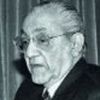BJP's safe man at Rashtrapati Bhavan
The president is a constitutional head of state in a parliamentary democracy in which the prime minister is the chief executive.

On July 25, Ram Nath Kovind was sworn in as India’s 14th President. The Rashtriya Swayamsevak Sangh mouthpiece Organiser characterised him as one “deeply rooted in the ideological stream of the RSS”. Like all prime ministers, Narendra Modi wanted a “safe” person in the Rashtrapati Bhavan.
India’s presidents have been a varied lot. The first president, Rajendra Prasad sought to grab power for himself less than two months after assuming the presidency. He sent Nehru a note dated March 21, 1950, in which he sought to reopen the very issue on which, in his presence, the Constituent Assembly had decided. The president is a constitutional head of state in a parliamentary democracy in which the prime minister is the chief executive.
Granville Austin’s criticism of the president is apt: “Had his first attempt to ignore conventional restrictions and to play the part of his own prime minister not been foiled, parliamentary government in India would have disappeared before it was two years old.”
His successor, Dr S. Radhakrishnan was ambitious and also addicted to intrigue. The American ambassador, Chester Bowles, recorded: “On several occasions, he expressed to me in a half-joking manner the wish that somehow after Nehru’s death or retirement, the whole country could operate under “president rule” for a few months.” Indira Gandhi was hardly the person who would suffer an “uncle” as president. She refused him a second term.
Zakir Husain, a model president, died after a heart attack in 1969. The Congress party overruled Indira Gandhi, and selected her critic as candidate for the presidency. She selected her own favourite and got him elected, splitting the Congress. V.V. Giri was the first “rubber-stamp” president. His successor Fakhruddin Ali Ahmed became infamous for signing the Proclamation of Emergency in 1975 when he knew that the conditions warranted no such measure.
A successor Zail Singh began as a rubber stamp under Indira Gandhi but became a dangerous problem when her son and successor Rajiv Gandhi snubbed him. Twice, in 1987, he contemplated dismissing the prime minister. If he had not been deterred, Zail Singh would have plunged the country into a deep crisis.
The Indian presidency truly came into its own only in 1992, 40 years after the constitution came into force, with the election of Dr Shankar Dayal Sharma as president. He was neither a rubber stamp nor an intriguer but a constitutional head alive to his limits and to his duties. He asserted his independence within a short time.
On December 6, 1992, when the Babri Mosque was demolished, he had a statement issued: “The president, Dr Shankar Dayal Sharma, has strongly deplored vandalism that has caused damage to the masjid in Ayodhya and has observed that such acts are absolutely against the doctrine and practice of Hinduism and all other great religions.”
His successor K.R. Narayanan emulated him and strongly condemned the killings of a missionary and his son by RSS affiliate Bajrang Dal. The retiring president Pranab Mukherjee did not emulate these examples when lynching of Muslims in the cow protection campaign became endemic. He contented himself with uttering careful comments which would not hurt the BJP but were so couched as to pass for criticism. Having successfully worked hard to become president, he had no desire to rock the boat. A fawning media lauded him to the skies. So did the prime minister, Narendra Modi.
Indian practice has yielded conventions which are well recognised. First, the president is entitled, to question the government’s bills, appointments, and policy proposals particularly judicial appointments and imposition of direct central rule in the state.
Second, within limits, Presidents can comment on affairs of the state in public. Only rarely are public expressions of disquiet considered proper. Third, the President is entitled to admonish and even censure the Prime Minister in private. Fourth, he has a right to know. Fifth, there is now a practice where the President can receive opposition leaders who may came on their own or with a delegation, to lodge a protest against the government.
Sixth, the President is not bound to accept a request by the Prime Minister’s to dissolve the lower house and can exercise his judgment. Seventh, the power of dismissal of the government cannot be exercised except on extreme grounds mentioned in authoritative works.
Eighth, not only the Opposition parties but the chief ministers also invoke the President’s moral authority as “guardian of the Constitution”. The question whether the President has a right to address Parliament or send messages to it in his own discretion is open. Hence the need to keep a safe man in the President’s house. In his very first speech on July 25 Ram Nath Kovind made known his fealty to the BJP’s creed.
By arrangement with Dawn
